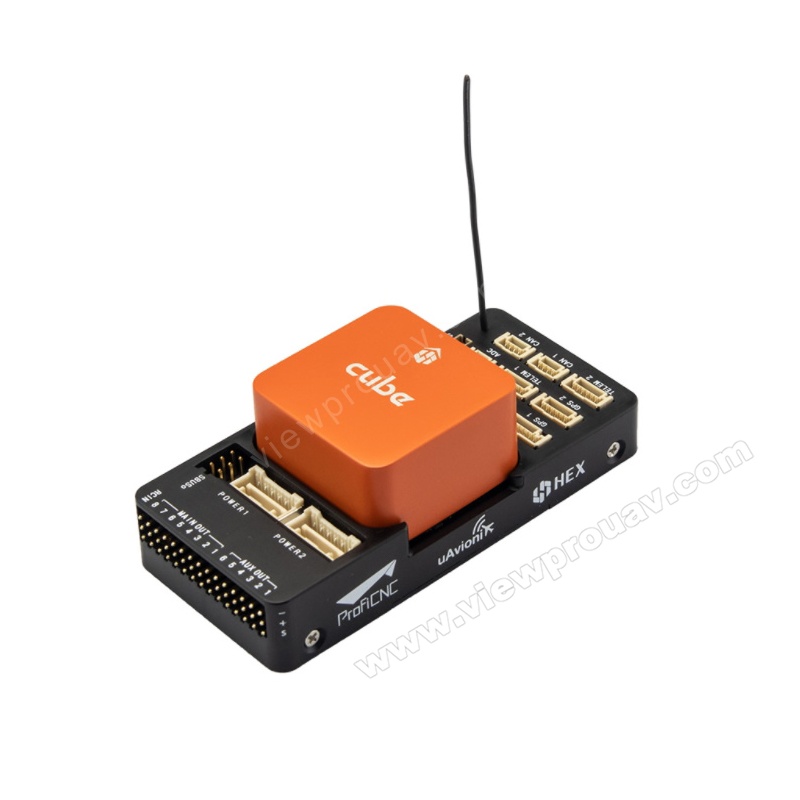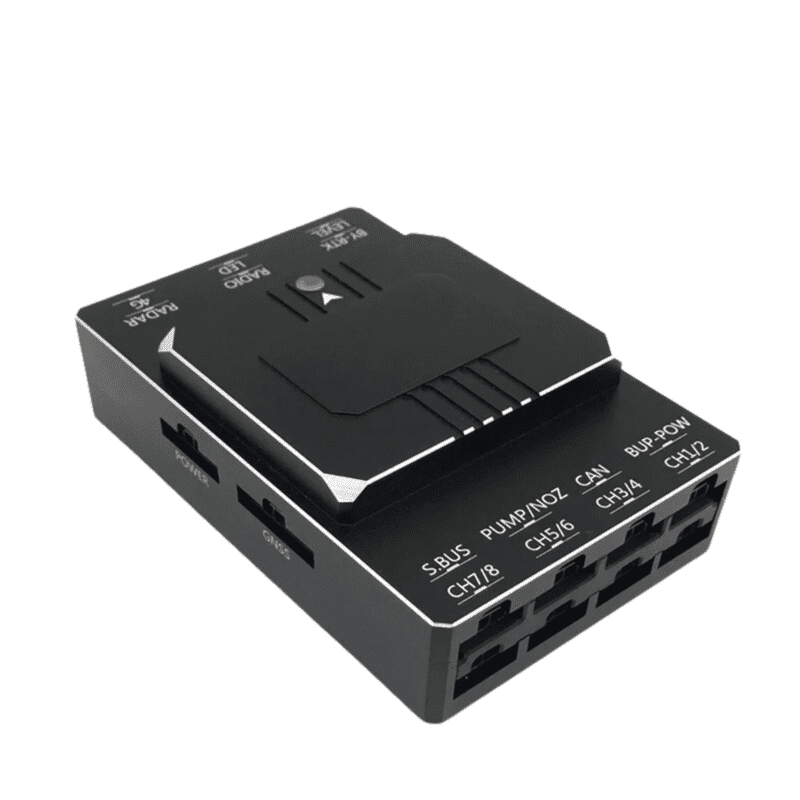The Potential of UAVs: SparkNavi Drone Flight Controller and GNSS/INS Made in Taiwan
The Potential of UAVs: SparkNavi Drone Flight Controller and GNSS/INS Made in Taiwan
Blog Article
Discovering the Duty of Drone Trip Controllers in Enhancing Flight Security and Navigating Effectiveness
The development of drone technology has dramatically boosted the value of flight controllers, which act as the mind of these aerial vehicles. By incorporating real-time data from a range of sensing units, flight controllers boost flight security and navigation efficiency, ensuring that drones can operate smoothly also in intricate environments. This conversation will certainly explore the vital parts that add to these renovations, as well as the ramifications for the future of independent flight. What advancements lie in advance that could additionally change the capacities of drone flight controllers?

Comprehending Trip Controllers
Trip controllers are essential components in the performance of drones, functioning as the minds that manage and support trip procedures. These sophisticated devices procedure data from numerous sensing units, consisting of accelerometers, gyroscopes, and GPS, to guarantee that the drone preserves its desired flight path. The trip controller analyzes this data and executes commands based upon pre-defined formulas, enabling the drone to react to ecological adjustments, such as wind or challenges.
The primary feature of a flight controller is to keep stability during flight. It attains this by making real-time modifications to the drone's motors and control surface areas, guaranteeing balance and control. Additionally, modern-day flight controllers incorporate sophisticated attributes such as waypoint navigating, enabling automated flight paths and improved functional efficiency.
Comprehending the design of flight controllers is essential for both experts and enthusiasts. As innovation developments, trip controllers have actually come to be extra qualified and portable, incorporating synthetic knowledge to adapt and boost decision-making procedures to complicated flight circumstances.
Trick Elements of Flight Stability
Attaining ideal flight security in drones counts on a number of key parts that function in show to guarantee smooth and controlled operations. Central to this stability is the trip controller itself, which processes data from various sensing units to preserve the wanted trip perspective. This consists of accelerometers and gyroscopes that gauge movement and positioning, enabling for real-time adjustments to the drone's position.
One more critical element is the electronic rate controllers (ESCs), which manage the power delivered to the motors. By finely tuning motor rates in response to trip controller commands, ESCs help preserve equilibrium and counteract disturbances caused by wind or abrupt movements.
In addition, the design of the drone's structure plays an essential function in trip security. A well-structured frame minimizes resonances and enhances the general aerodynamic account, adding to smoother flight attributes. Finally, the integration of innovative algorithms within the trip controller aids in predictive changes, guaranteeing a receptive and versatile trip experience.
Together, these parts create a natural system that improves a drone's security, permitting exact handling and enhanced efficiency in numerous trip problems.
Navigating Effectiveness Strategies
Performance in navigation is crucial for optimizing drone operations, particularly in complicated atmospheres. Efficient navigating strategies boost the capacity of drones to traverse tough terrains and avoid barriers, therefore improving operational efficiency and safety.
One popular method is the execution of innovative general practitioners and inertial dimension devices (IMUs) that provide precise area monitoring and alignment data. These innovations enable drones to determine ideal trip courses in real-time, thinking about various variables such as wind problems and possible obstacles.
Another technique includes using formulas for path preparation and optimization. Formulas such as A * and Dijkstra's formula can be deployed to figure out the most efficient path while lessening energy consumption and trip time. Integrating machine discovering designs can allow drones to adaptively learn from their settings, improving navigation capacities with experience.

Effect on Autonomous Drones
The assimilation of advanced navigating strategies has exceptionally changed the capacities of self-governing drones, allowing them to operate with better autonomy and accuracy. SparkNavi drone flight controller and GNSS/INS made in taiwan. These improvements are mostly credited to advanced flight controllers that make use of real-time information handling and sensing unit blend, allowing drones to navigate complex environments seamlessly
The influence on self-governing drones extends past simple navigation; it incorporates improved barrier avoidance, boosted stability throughout vibrant conditions, and enhanced mission dependability. By leveraging formulas that integrate artificial intelligence and man-made intelligence, drones can adjust to altering scenarios, making notified choices that enhance their trip paths while decreasing dangers.
Furthermore, the execution of durable flight controllers has check this site out actually facilitated the execution of intricate tasks, such as airborne evaluations, shipment solutions, and agricultural tracking, with marginal human intervention. This ability not only enhances procedures but likewise lowers human error, consequently boosting overall safety and security.
As a result, the functional scope of self-governing drones has actually expanded substantially, making them indispensable tools in numerous industries. Their ability to carry out successfully in varied scenarios highlights the important duty that progressed trip controllers play fit the future of unmanned aerial systems.
Future Patterns in Trip Control
Regularly, innovations in flight control technology are positioned to redefine the landscape of drone operations in the coming years. Emerging trends suggest a considerable change in the direction of improved artificial intelligence (AI) news combination, making it possible for trip controllers to refine real-time information much more efficiently. This advancement will promote enhanced decision-making capabilities, permitting drones to adjust to vibrant environmental conditions autonomously.
Additionally, the execution of artificial intelligence algorithms is anticipated to boost anticipating upkeep, therefore decreasing downtime and expanding the lifecycle of drone parts. This positive technique to maintenance will be vital as drone applications broaden across various industries, from farming to logistics.

.jpg)
Lastly, advancements in protected interaction procedures will address safety and regulatory concerns, ensuring that drones can operate effortlessly in busy airspaces (SparkNavi drone flight controller and GNSS/INS made in taiwan). Collectively, these patterns direct towards a future where flight control systems are not only smarter and more also capable yet reliable of running safely in an increasingly integrated airspace
Verdict
In verdict, drone flight controllers are indispensable to enhancing trip security and navigation effectiveness through the advanced processing of sensor data. By preserving ideal trip perspectives and using innovative formulas for course optimization and barrier evasion, these controllers considerably add to the freedom and functional safety of drones. As technology remains to develop, additionally improvements in trip control systems are prepared for, promising improved performance and expanded capabilities in the world of unmanned airborne lorries.
By incorporating real-time data from a range of sensors, trip controllers boost trip security and navigation efficiency, ensuring that drones can operate smoothly also in complicated atmospheres.Trip controllers are essential components in the performance of drones, serving as the minds that handle and stabilize trip read the full info here procedures. In addition, modern flight controllers incorporate advanced functions such as waypoint navigation, enabling for automated flight courses and boosted functional efficiency.
Central to this stability is the flight controller itself, which processes data from different sensors to preserve the desired trip perspective.In final thought, drone flight controllers are integral to enhancing flight stability and navigating effectiveness via the sophisticated processing of sensing unit data.
Report this page